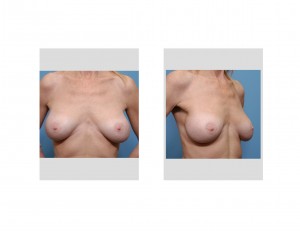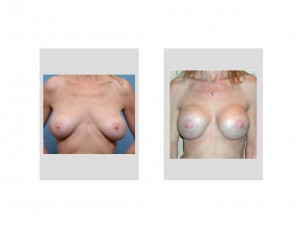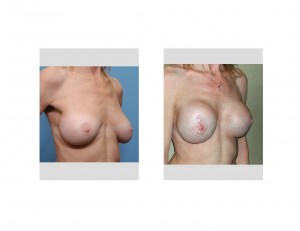Background: Breast augmentation surgery is mainly associated with the size and shape of the implant, understandably so given its influence on the result. But the implant must be expertly placed in just the right location to have it exert its best effect. That is not always easy given the great variances in breasts between women and often between the breasts of the same woman. Even minor amounts of implant malposition can result in disturbing aesthetic changes in the external shape of the breast.
Breast implant malpositioning is not a rare problem and every women who undergoes breast augmentation needs to appreciate this risk. Getting good implant placement in one breast can be challenging but doing it in two breasts side by side that will be compared for symmetry magnifies the task. Implant malposition can occur for a variety of reasons such as overdissection of the initial implant pocket and loss of lower pole tissue support due to the weight of the implants.
Breast implant malposition can occur in any direction but one of the more common and most challenging is the phenomenon of ‘bottoming out’. This is when the implant and the lower pole of the breast drops below the original or re-created inframammary lower breast fold. Almost always there is an element of lateral or side implant malpositioning as well. This can be a difficult problem to correct because lifting and holding a breast implant upward over time is a lot harder than dropping an implant down that is too high. Fighting gravity is harder than working with it.



Breast implant bottoming out is not an easy problem to fix and revisional surgery of the fix may still be needed in some cases. The problem can be prevented in some patients by avoiding large implants which may be too heavy for the amount of lower pole breast tissue support. This was clearly not the case in this patient and likely represented overdissection of the pocket during the initial surgery.
Case Highlights:
1) Breast implant malpositioning is a not uncommon problem after augmentation surgery, the most challenging of which is the implant that has bottomed out.
2) Correction of breast implant malpositioning requires a variety of non-implant maneuvers, including tightening the capsule, changing the position of the pocket and lower breast pole support methods.
3) Overcorrection of inferior breast implant malpositioning is useful as some degree of relapse can be expected in some cases.
Dr. Barry Eppley
Indianapolis, Indiana


